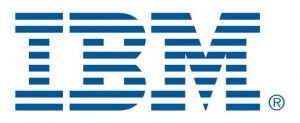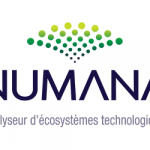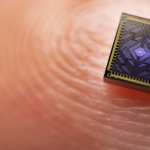Quantum News Briefs June 15: IBM quantum computer demonstrates next step towards moving beyond classical supercomputing; Keysight introduces first PCI Express 6.0 protocol validation tools; Amazon Braket now included in ‘AWS SOC-2 Security, Availability, Confidentiality & Privacy Report’ + MORE

Quantum News Briefs June 15: IBM quantum computer demonstrates next step towards moving beyond classical supercomputing; Keysight introduces first PCI Express 6.0 protocol validation tools; Amazon Braket now included in ‘AWS SOC-2 Security, Availability, Confidentiality & Privacy Report’ + MORE.
IBM quantum computer demonstrates next step towards moving beyond classical supercomputing
 IBM announced important quantum computing research that was published on the cover of the scientific journal Nature The Benchmark’ experiment suggests quantum computers could have useful real-world applications within two years. Quantum News Briefs summarizes.
IBM announced important quantum computing research that was published on the cover of the scientific journal Nature The Benchmark’ experiment suggests quantum computers could have useful real-world applications within two years. Quantum News Briefs summarizes.
In their experiment, the IBM team demonstrates that it is possible for a quantum computer to outperform leading classical simulations by learning and mitigating errors in the system. The team used the IBM Quantum ‘Eagle’ quantum processor composed of 127 superconducting qubits on a chip to generate large, entangled states that simulate the dynamics of spins in a model of material and accurately predict properties such as its magnetization.
To verify the accuracy of this modeling, a team of scientists at UC Berkeley simultaneously performed these simulations on advanced classical computers located at Lawrence Berkeley National Lab’s National Energy Research Scientific Computing Center (NERSC) and Purdue University. As the scale of the model increased, the quantum computer continued to turn out accurate results with the help of advanced error mitigation techniques, even while the classical computing methods eventually faltered and did not match the IBM Quantum system.
“This is the first time we have seen quantum computers accurately model a physical system in nature beyond leading classical approaches,” said Darío Gil, Senior Vice President and Director of IBM Research. “To us, this milestone is a significant step in proving that today’s quantum computers are capable, scientific tools that can be used to model problems that are extremely difficult – and perhaps impossible – for classical systems, signaling that we are now entering a new era of utility for quantum computing.” To learn more about the details of the demonstration and the results, read the IBM Research blog
Their ‘error-mitigating’ techniques enabled the team to do quantum calculation “at a scale where classical computers will struggle”, says Katie Pizzolato, who heads IBM’s quantum theory group in Yorktown Heights, New York.
“What IBM showed here is really an amazingly important step in that direction of making progress towards serious quantum algorithmic design,” said Dorit Aharonov, a professor of computer science at the Hebrew University of Jerusalem who was not involved with the research but was cited in a related NY Times article by Kenneth Chang updated on June 15.
While researchers at Google in 2019 claimed that they had achieved “quantum supremacy” — a task performed much more quickly on a quantum computer than a conventional one — IBM’s researchers say they have achieved something new and more useful, albeit more modestly named.
Sabrina Maniscalco, chief executive of quantum-computing start-up Algorithmiq in Helsinki, says that the experiment provides a benchmark for the state-of-the-art in quantum computers. “These machines are coming,” she says. Maniscalco’s company is developing algorithms for quantum-chemistry calculations that use error mitigation.
“We’re entering this phase of quantum computing that I call utility,” said Jay Gambetta, a vice president of IBM Quantum. “The era of utility.”
The IBM researchers used a quantum processor with 127 qubits to simulate the behavior of 127 atom-scale bar magnets — tiny enough to be governed by the spooky rules of quantum mechanics — in a magnetic field. That is a simple system known as the Ising model, which is often used to study magnetism. This problem is too complex for a precise answer to be calculated even on the largest, fastest supercomputers.
Although the problem they attacked uses a much-simplified, unrealistic model of a material, “It makes you optimistic that this will work in other systems and more complicated algorithms,” says John Martinis, a physicist at the University of California, Santa Barbara, who led the Google team to their 2019 milestone.
Click to review sources cited in summary above: Nature, June 14, NYTimes, June 15, IBM Press Release.
Keysight introduces first PCI Express 6.0 protocol validation tools
Keysight Technologies, Inc. has introduced the first PCI Express (PCIe) 6.0 protocol validation tools. The cable-free Protocol Analyzer and Protocol Exerciser enable semiconductor, computer, and peripheral makers to perform complete silicon chip, root complex, and endpoint system verification in a real-time development environment.
With the standard enabling new designs for servers, endpoint devices, switches, storage devices, and compute engines at speeds up to 64 gigatransfers per second (GT/s), equipment and device companies need protocol test solutions to validate PCIe 6.0 technology designs and ensure interoperability with other PCIe 6.0 specification compliant designs.
Keysight meets the need of design engineers with the first PCIe 6.0 Protocol Analyzer and PCIe 6.0 Protocol Exerciser. These cable-free solutions provide testing versatility and enable faster, more confident testing of PCIe 6.0 technology designs.
The new Keysight protocol PCIe 6.0 architecture solutions offer:
–Analysis of the data link / transaction layer of PCIe 6.0 technology designs.
Support for all PCIe technology speeds – 2.5 GT/s, 5.0 GT/s, 8 GT/s, 16 GT/s, 32GT/s, and 64GT/s (PAM4) – and lane widths from x1 to x16.
–Emulation of root complex and endpoint devices when validating PCIe and Compute Express Link (CXL) technology designs.
–Debugging support with PCIe 6.0 technology and CXL 1.1 / 2.0 protocol visualization and analysis tools.
–Cable-free protocol analysis in a streamlined Card Electromechanical CEM form factor.
–Complete PCIe 6.0 standard test solution for the entire design cycle.
Click here to read original announcement in-entirety.
Amazon Braket now included in ‘AWS SOC-2 Security, Availability, Confidentiality & Privacy Report’
Amazon Braket, the quantum computing service of AWS, is included in the latest AWS System and Organization Controls (SOC-2) report, published on May 15, 2023.Richard Moulds reported on this development June 15 in the AWS Quantum Technologies blog summarized below by Quantum News Briefs.
Braket has now, for the first time, completed security control validation from an external auditor, adding it to the list of services covered by Amazon’s semi-annual SOC-2 compliance audit. The full list of services can be found here.
The AWS System and Organization Controls (SOC) reports are a description of the AWS controls environment, and the results from an independent audit against those controls, in support of security, availability, confidentiality, and privacy trust services criteria defined by the American Institute of Certified Public Accountants (AICPA).
Security and compliance are a shared responsibility between AWS and its customers. That means AWS is responsible for protecting the global infrastructure that runs the AWS Cloud. Customers are responsible for maintaining control over their content that they host on this AWS infrastructure. This includes the security configuration and management tasks for the AWS services they use.
In the case of Braket, there’s an additional component of the shared responsibility model associated with accessing quantum hardware. This is because Braket provides access to third-party quantum hardware where quantum hardware providers
(QHPs) process quantum circuits and the associated data outside of facilities operated by AWS.
These additional, QHP-specific controls cover a number of areas, including the following:
Data Privacy:
Data Security:
Incident Response:
Click here to read article in-entirety.
Quantum sensing breakthrough: Infleqtion unveils the future of resilient navigation
 Infleqtion has announce breakthrough progress in advancing the field of quantum navigation by a University Colorado team in work supported by Infleqtion and the National Science Foundation. The team demonstrated the world’s first software-configured, quantum-enabled high-performance accelerometer by combining machine learning with quantum sensing. It is designed for Positioning, Navigation, and Timing (PNT) applications that operate under accelerations up to several tens of times the Earth’s gravity (g). Quantum News Briefs summarizes the announcement.
Infleqtion has announce breakthrough progress in advancing the field of quantum navigation by a University Colorado team in work supported by Infleqtion and the National Science Foundation. The team demonstrated the world’s first software-configured, quantum-enabled high-performance accelerometer by combining machine learning with quantum sensing. It is designed for Positioning, Navigation, and Timing (PNT) applications that operate under accelerations up to several tens of times the Earth’s gravity (g). Quantum News Briefs summarizes the announcement.
The accelerometer demonstrated a sensor volume reduction of greater than a factor of 10,000 times compared to the current state-of-the-art technology. It also withstands unwanted vibrations by a factor of 10-100 times greater than traditional atom-based sensors. This achievement demonstrates how atom interferometry’s exceptional precision can be applied in practical, real-world environments.
These results highlight the future of quantum sensing as a high-precision alternative to satellite-based GPS signals, addressing vulnerabilities associated with GPS denial or spoofing tactics employed by adversaries. This breakthrough enables optimal adaptability to mission requirements and opens new possibilities for precision in real-world GPS-denied environments. The findings will be presented at the annual APS Division of Atomic, Molecular, and Optical Physics Meeting. Click here to read June 7 announcement in-entirety on Infleqtion’s website.
Sandra K. Helsel, Ph.D. has been researching and reporting on frontier technologies since 1990. She has her Ph.D. from the University of Arizona.




















